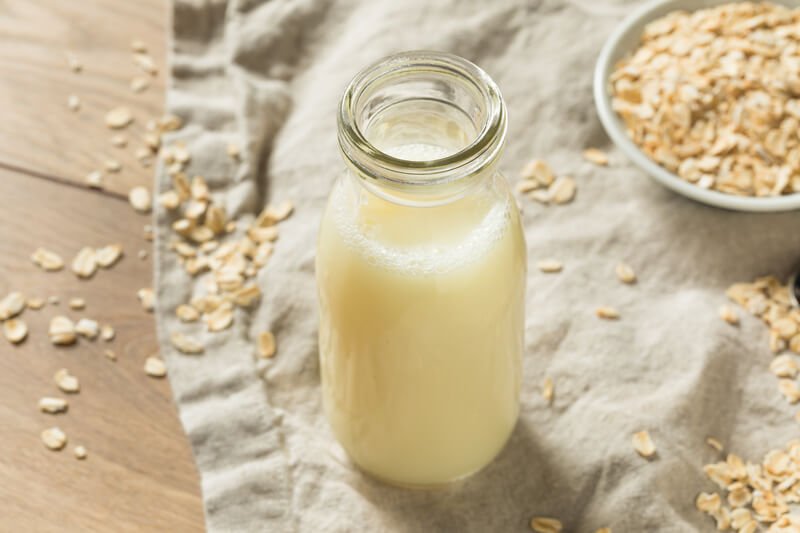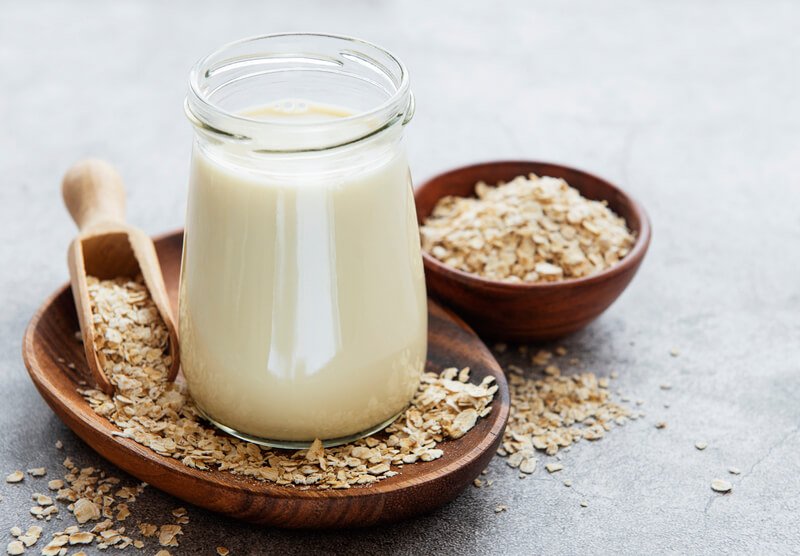If you are doing the paleo diet, you probably know that you are not supposed to eat grains, including oats. But does that mean you can't drink oat milk?
Oat milk is made from grains and is not suitable for a paleo diet. The paleo diet does not allow for dairy products or grains, ruling out oat milk as a potential alternative.
But you're not completely out of luck. We'll explain why oat milk isn't paleo and give you some great (non-dairy) milk options.
Is Oat Milk Paleo?
The paleo diet includes foods that our hunter-gatherer ancestors would have eaten.
The thinking behind this diet is that our bodies are better adapted to these types of foods and that modern, processed foods cause many chronic diseases.
The paleo diet typically includes lean meats, fish, fruits, vegetables, nuts, and seeds.
Most people believe that grains are not paleo because they are a relatively recent addition to the human diet, and our bodies have not had time to adapt to them.
Oat milk—a grain-based dairy alternative—is not suitable for anyone following the paleo diet.
Oats contain complex carbohydrates that paleo enthusiasts argue are too difficult for modern humans to digest.
Related: Is Oat Milk Keto?
Is Oat Milk Creamer Paleo?
Oat milk creamer is not paleo.
Compared to standard oat milk, creamer products are far more processed and contain various additives to create a creamy, foamy texture.
For example, a standard commercial oat milk creamer may contain:
- Baking soda
- Sunflower oil
- Cane sugar
- Gellan gum
- Potassium Citrate
- Pea proteins
None of these ingredients fit with a paleo diet.
They are all highly processed and would not have existed in a hunter-gatherer's diet.
Therefore, do not drink oat milk creamers if you follow the paleo diet.

Are Oats Paleo?
Oats are a grain, so they're not paleo.
Although they are not highly processed, our hunter-gatherer ancestors would likely not have consumed them as a standard part of their diet.
Researchers believe that oats were first domesticated and cultivated around 2,500 BCE, roughly 5,500 years after humans shifted away from hunter-gatherer groups into agricultural societies.
Our early human ancestors would have had little interaction with these foods. Even early settled agricultural societies would not have had oats for several millennia.

Paleo Alternatives to Oat Milk
We should caveat that plant-based milk is only paleo depending on the ingredients.
They should be free of additives, preservatives, and other extra ingredients common in store-bought milk.
Ideally, it should only contain 2 ingredients—the milk source (e.g., coconut meat, almonds, cashew) and water.
You can also make it yourself to be on the safe side.
Coconut Milk
Coconut milk is a delicious and creamy dairy alternative that is also paleo-friendly.
It's made by blending the flesh of a coconut with water and then straining it to remove any solid pieces.
The remaining liquid is high in natural fats and sugars, making it a close second to dairy milk.
Additionally, there's firm evidence that humans have been consuming coconuts for at least 4,500 years.
This means that our early hunter-gatherer ancestors—especially those in the Solomon Islands—likely consumed these foods, making them an unprocessed and paleo-friendly milk alternative.
Almond Milk
As far as non-dairy milk alternatives go, almond milk is one of the oldest, dating back to at least the 13th century, when Baghdadi chefs were known to turn the nuts into a delicious milky beverage.
However, the almond has been a staple of the human diet since the early days of man, making almond milk a wonderful paleo-friendly milk.
Almond milk is made by blending almonds with water and then straining the mixture to remove any solid pieces.
The final product is a smooth and slightly sweetened liquid containing all the benefits of almonds, including high in antioxidants, vitamins, and minerals.
Related: Is Almond Milk Paleo?
Cashew Milk
Cashew milk is another dairy-free and paleo-friendly beverage made by blitzing cashews with water and then filtering the mixture.
What's left behind is a creamy and nutty liquid high in antioxidants, vitamins, and minerals.
It's slightly fattier than other nut milk, making it a popular option for paleo dieters who like a little more flavor.
Cashews are a relatively new food in the human diet, but they are still a paleo-friendly option.
They were first domesticated in Brazil in the 16th century and didn't become widely available in other parts until the 19th century.
Nevertheless, hunter-gatherer societies that settled in the Amazon basin would have consumed these foods as a part of their daily diets.
Therefore, cashews are well within the limitations set by the paleo diet.
Walnut Milk
Like the other dairy-free paleo-friendly nut kinds of milk shared above, walnut milk is made by blending walnuts with water and then filtering particles from the mixture.
The final result is a brownish-white liquid that tastes sweet and nutty and is high in vitamins and minerals.
Walnut milk is slightly creamier than almond milk, though healthier than cashew and coconut milk.
Like cashews, walnuts are a relative newcomer to the human diet, only being domesticated in the Bronze Age.
Nevertheless, they are a paleo-friendly food consumed by humans for at least 50,000 years, making this a smart choice for anyone wanting a dairy-free milk substitute.
Conclusion
No, oat milk isn't paleo.
Thankfully there are plenty of other types of non-dairy milk that are paleo-friendly.
Stick to the nut milk options we mentioned and you can get your milk-fix even on a paleo diet!
